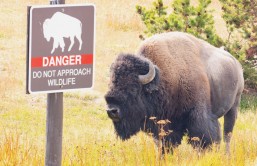Back in 2014, a 242-million-year-old fossil of a crocodile-sized marine reptile from China stumped scientists with its strange flamingo-like beak. Now, a new study suggests that this "hammerhead" creature - Atopodentatus unicus - was actually a vegetarian, making it the earliest known example of a herbivorous marine reptile.
"It's a very strange animal," said Olivier Rieppel of The Field Museum in Chicago and co-author of the study. "It's got a hammerhead, which is unique, it's the first time we've seen a reptile like this."
The name A. unicus stems from the reptile's past and is Latin for "unique strangely toothed." However, the new findings shed light on this mysterious past and reveal its wide jaw in detail, with its peg-like teeth and needle-like teeth further into its mouth.
"To figure out how the jaw fit together and how the animal actually fed, we bought some children's clay, kind of like Play-Doh, and rebuilt it with toothpicks to represent the teeth," Rieppel said. "We looked at how the upper and lower jaw locked together, and that's how we proceeded and described it."
The results suggest that the creature's strange jaw was beneficial as a herbivore and helped it eat plants.
"It used the peg-like front teeth to scrape plants off of rocks on the sea floor, and then it opened its mouth and sucked in the bits of plant material," Rieppel explained. "Then, it used its needle-like teeth as a sieve, trapping the plants and letting the water back out, like how whales filter-feed with their baleen."
Rieppel and his Field Museum team have not only put to rest the mystery of the strange teeth of the animal, but provided evidence of the first vegetarian marine reptile.
"The jaw structure is clearly that of an herbivore," he said. "It has similarities to other marine animals that ate plants with a filter-feeding system, but Atopodentatus is older than them by about eight million years."
The team's findings also help shed light on the world's biggest mass extinction that took place 252 millions years ago during the boundary between the Permian and Triassic geologic periods.
"Animals living the years surrounding the Permian-Triassic extinction help us see how life on earth reacted to that event," Rieppel said. "The existence of specialized animals like Atopodentatus unicus shows us that life recovered and diversified more quickly than previously though. And it's definitely a reptile that no one would have thought to exist -look at it, it's crazy!"
The findings were published in the May 6 issue of the journal Science Advances.



![[STUDY] Most Americans Think Inhaling Marijuana Smoke is Safer Than Cigarette; Health Experts Now Concerned](https://1075914428.rsc.cdn77.org/data/thumbs/full/280324/75/75/50/40/study-most-americans-think-inhaling-marijuana-smoke-is-safer-than-cigarette-health-experts-now-concerned.jpg)




